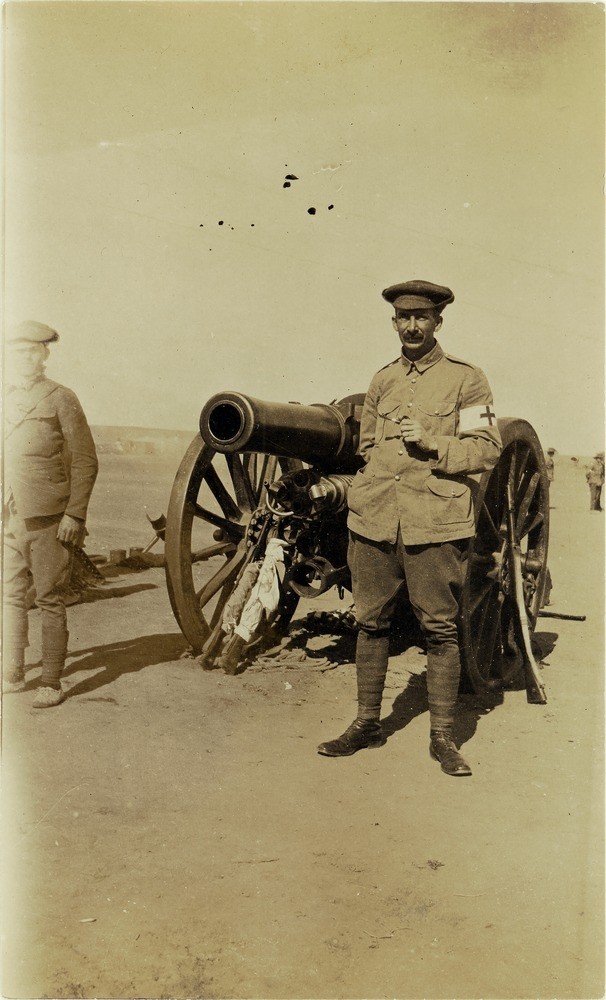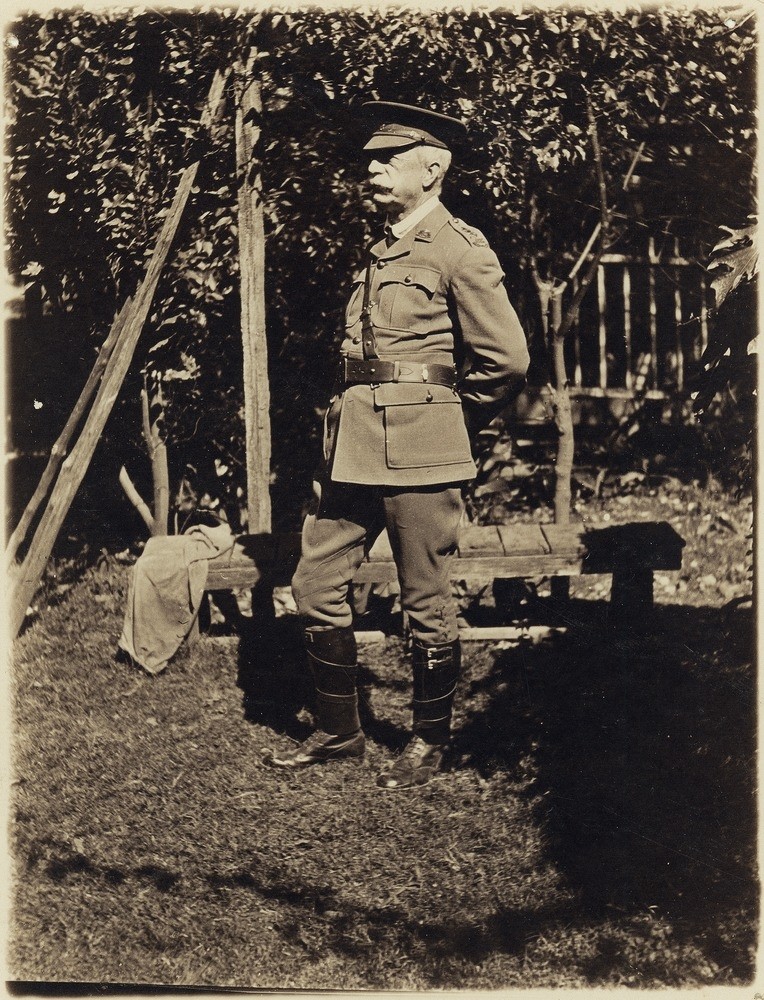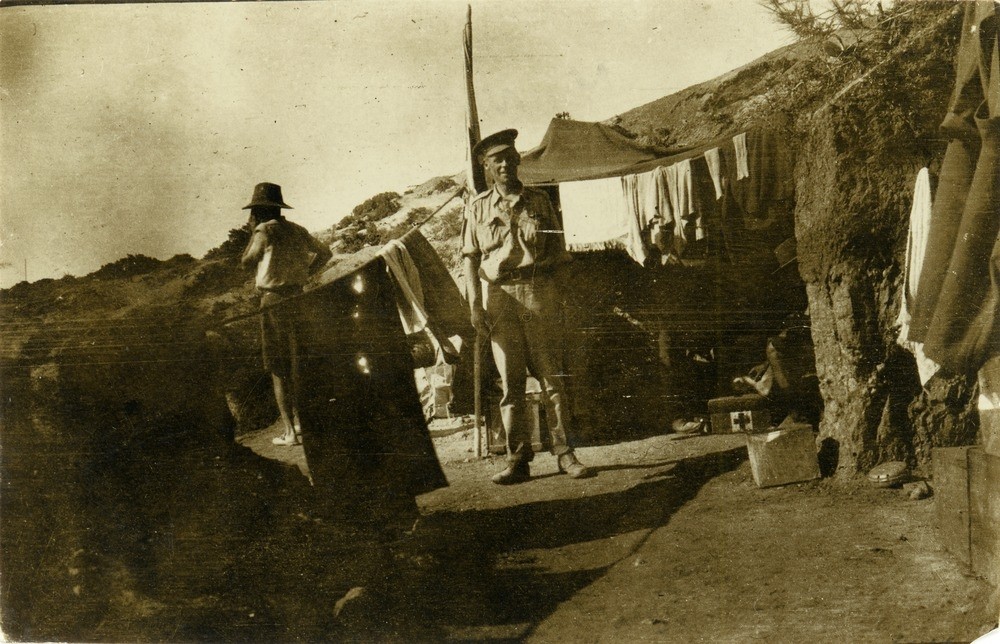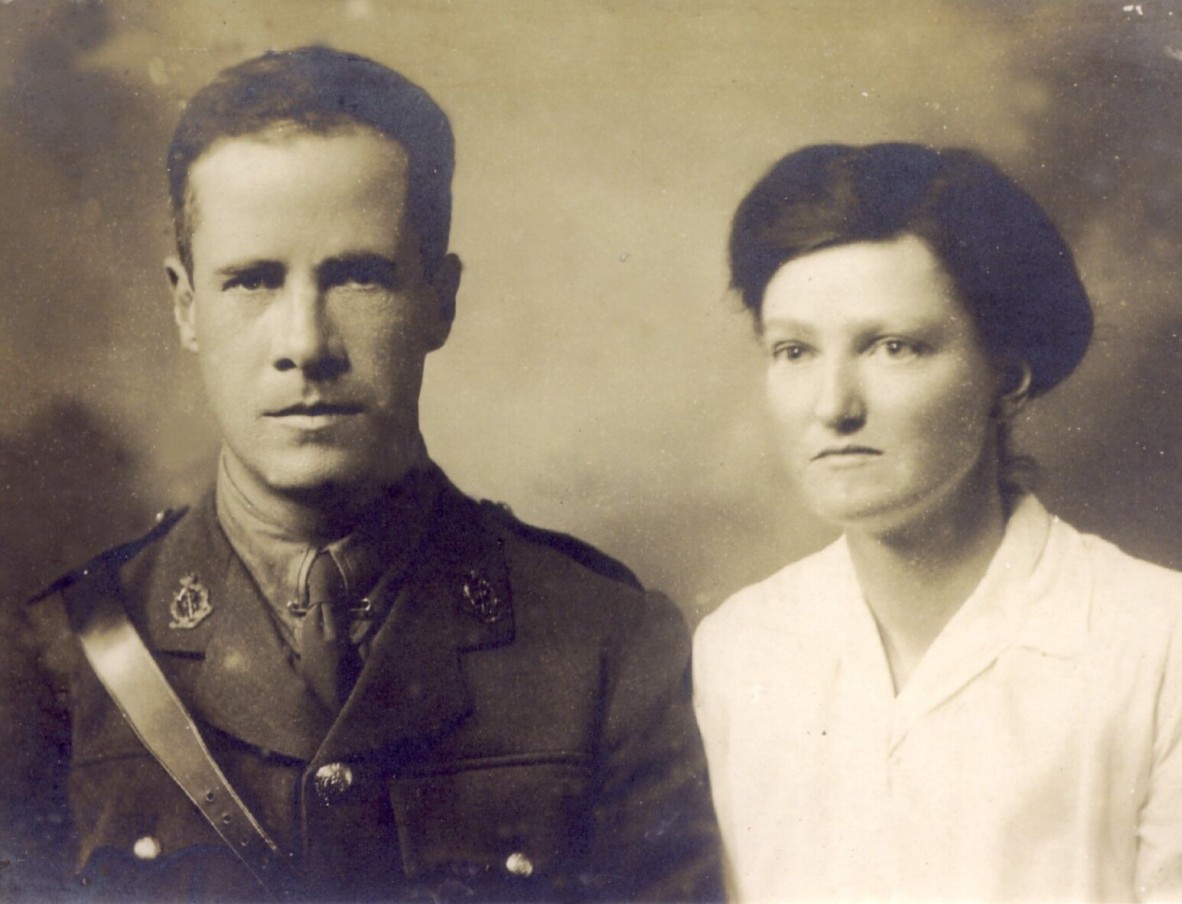
Captain Alexander Marks at standing next to an artillery gun and carriage at Mena Camp outside Cairo, Egypt, 1914, John Oxley Library, State Library of Queensland, Image: 27331-3016-0046
State Library has just uploaded a new digital story which highlights the 27331 Marks Family Collection ca. 1735-1985 - an extensive archive spanning several generations of the Marks family, which figured prominently in the social, scientific and medical spheres of Brisbane society from 1879 until the death of eminent entomologist Dr Elizabeth Nesta (Patricia) Marks in 2002.
In particular, the digital story focuses on the three soldier sons of medical practitioner and politician Charles Ferdinand Marks (1852-1941). Step-son, Joseph Espie Dods, and sons, Edward (Ted) Oswald Marks and Alexander (Alec) Hammett Marks, were all doctors who served during the First World War.
https://vimeo.com/231033130
Archivist Faye Schutt, who was employed by the Marks family to organise the vast collection as part of its donation to the State Library of Queensland, offered her thoughts on the family's records:
My first encounter with one of the Marks collections was at the Queensland Museum. I was selecting some items for an introduction to the exhibition, Family Collections, the Things We Are, and I decided to look at the things donated by the Marks Family because they were on the data base and I could print them out. I began printing at nine o’clock one morning using a dot matrix printer with continuous paper. The printout finally finished at about three o’clock in the afternoon and I had a wad of pages getting on for three inches thick and listing about two thousand five hundred items, ranging from a rare Thomas Tompion bracket clock worth more than a quarter of a million pounds to a celluloid doll called Cherry and a rat trap.
Some of the Marks were collectors. Alec Marks, (Alexander Hammett II) collected furniture and fine china. In villages in France where he was billeted as a doctor soldier in the Australian Medical Corps in WWI, he always kept an eye out for something interesting. In his letters to his father in Brisbane, held at the State Library, he drew sketches of nice pieces he came across, in one instance “a grandfather clock built into an armoire.” If the Dame of a cottage had china on display he would check it out.
And the family kept things. We have, for instance, all the receipts for the household goods they bought to equip the unfurnished house they rented on Wickham Terrace in 1880, from a Morocco suite and Turkish carpets to a patent mangle and a slop basin. The large house, three storeys and twenty rooms, built for Charles Ferdinand Marks I at 101 Wickham Terrace, was occupied by family from December 1882 to January 1982. There was a lot of time for accumulation and lots of space for storage. The archival collection I worked on at the John Oxley Library was accumulated in the house until it went with Patricia Marks (Dr.E.N.), the last 101 occupant, to her property at Samford. After her death it was the last of the Marks’ collections to be given to a Queensland institution.

Lieutenant-Colonel Charles Ferdinand Marks in Brisbane, Queensland, 1915, John Oxley Library, State Library of Queensland, Image: 27331-3016-0153
By that time it was a big collection, around 5000 letters, 195 diaries, account and farm record books, two metres of papers of various kinds, 34 albums of photographs, some hundreds of glass negatives and much more. The earliest family letter is from Larn Wright in Baltimore to his son-in-law Edward Marks, architect, of Cork. It was sent via Captain Agnew of the Hope in 1789. Another letter, with a penny red stamp on the envelope, came from Charles Dickens in 1856 to John Marks, solicitor of Cork. It’s possible that Marks wrote a fan letter and this is Dickens’ acknowledgement. Items like these may well have been brought from Ireland to Queensland in 1906 by “the aunts,” Blanche and Annette Marks, (sisters of Charles F.Marks) and passed down the generations as was the family tradition. In one of the handwritten books of domestic receipts and remedies is Elizabeth Grey Marks’ (wife of C.F.Marks) recipe for furniture polish, still in use in the family.

Captain Joseph Espie Dods at his first dressing station at Gallipoli, Turkey, 1915, John Oxley Library, State Library of Queensland, Image: 27331-3016-0059
One of the characteristics of the collection is how complete the material is both for recounting the general history of the family and for telling a particular story, for instance Ted and Nesta Marks’ holiday tour on “Mary,” a “motor bicycle” and side car, in Ireland in July 1915. We have the detailed account of adventures and misadventures in Nesta’s diary, and in letters to the family, the little photograph album they put together, the set of receipts for the hire of “Mary,” accommodation, petrol, repairs etc. the postcards they bought and the copy of Bacon’s Motoring and Cycling Road Map of Ireland.

Ted and Nesta Marks. Image provided by the Marks family.
Nesta was a highly organised woman and indefatigable as a “keeper” of letters. She kept the letters she received and asked others to keep the letters she wrote. There is a letter from her sister Evelyn in the collection which says she’s kept enough letters for Nesta now and she’s not going to keep any more. In the backs of Nesta’s diaries are monthly lists of letters sent and received, invaluable for identifying letter writers. Her husband E.O. (Ted) Marks was in the Royal Medical Corps in France from mid- 1916 to the end of 1918 when he contracted rheumatic fever. He wrote to Nesta almost every day and to his father (C.F.Marks) once a week. His letters are part of the extensive material including letters, photographs, papers of various kinds and artefacts, which makes the Marks collection (including items from the related families of Stodarts, Dods and Drurys) so valuable in documenting WWI.
To sum up the whole collection, it’s a rich documentation of a family over a long time, amazing stuff, and you never know what you’re going to find in it.
Other articles:
Alexander Hammett Marks' correspondence and photographs Digitised@SLQ
Ted Marks and the Dublin Easter Rising, 1916
Robyn Hamilton - QANZAC100 Content Curator, State Library of Queensland
Comments
Your email address will not be published.
We welcome relevant, respectful comments.